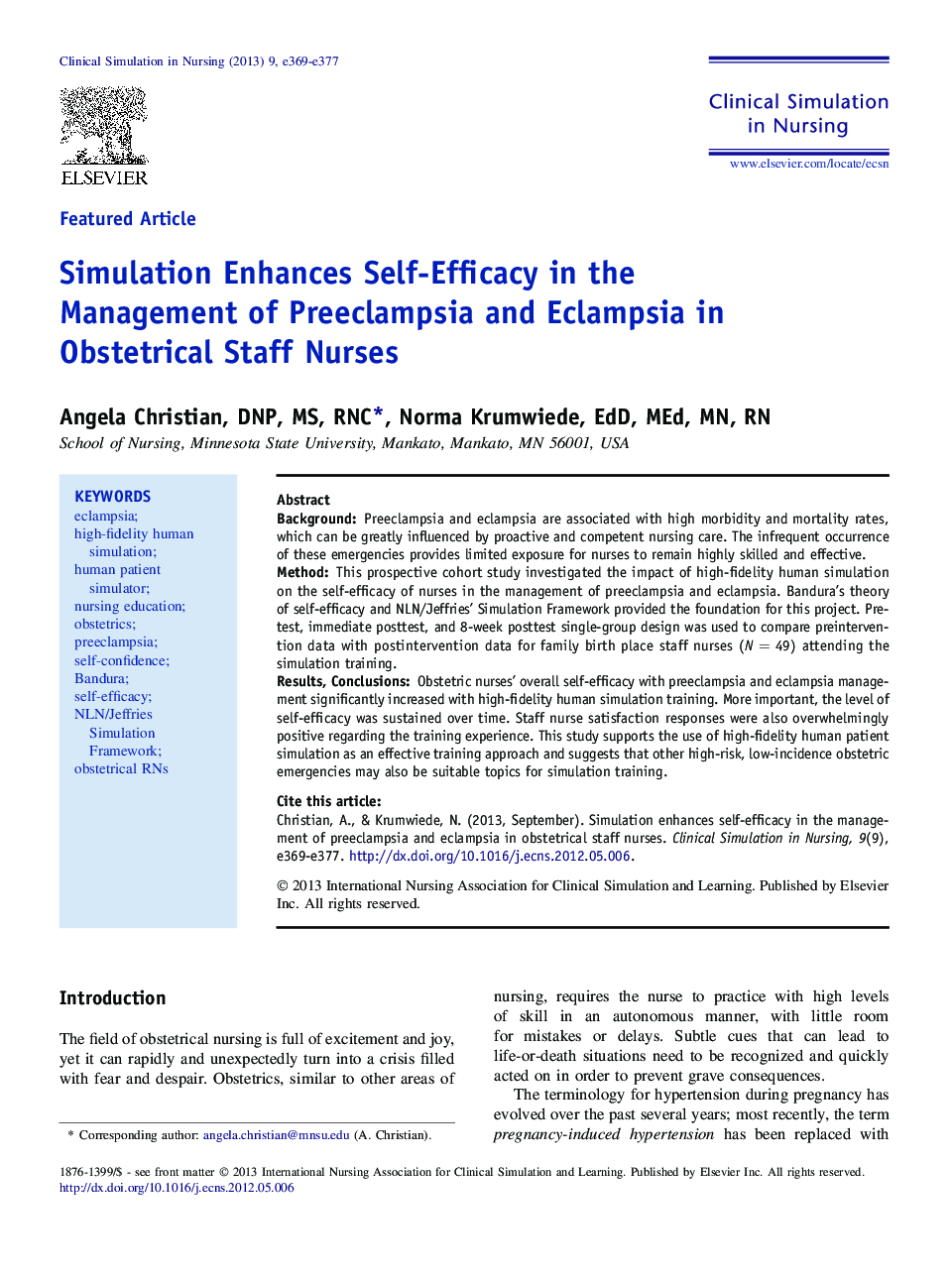| Article ID | Journal | Published Year | Pages | File Type |
|---|---|---|---|---|
| 2646510 | Clinical Simulation in Nursing | 2013 | 9 Pages |
BackgroundPreeclampsia and eclampsia are associated with high morbidity and mortality rates, which can be greatly influenced by proactive and competent nursing care. The infrequent occurrence of these emergencies provides limited exposure for nurses to remain highly skilled and effective.MethodThis prospective cohort study investigated the impact of high-fidelity human simulation on the self-efficacy of nurses in the management of preeclampsia and eclampsia. Bandura's theory of self-efficacy and NLN/Jeffries' Simulation Framework provided the foundation for this project. Pretest, immediate posttest, and 8-week posttest single-group design was used to compare preintervention data with postintervention data for family birth place staff nurses (N = 49) attending the simulation training.Results, ConclusionsObstetric nurses' overall self-efficacy with preeclampsia and eclampsia management significantly increased with high-fidelity human simulation training. More important, the level of self-efficacy was sustained over time. Staff nurse satisfaction responses were also overwhelmingly positive regarding the training experience. This study supports the use of high-fidelity human patient simulation as an effective training approach and suggests that other high-risk, low-incidence obstetric emergencies may also be suitable topics for simulation training.
